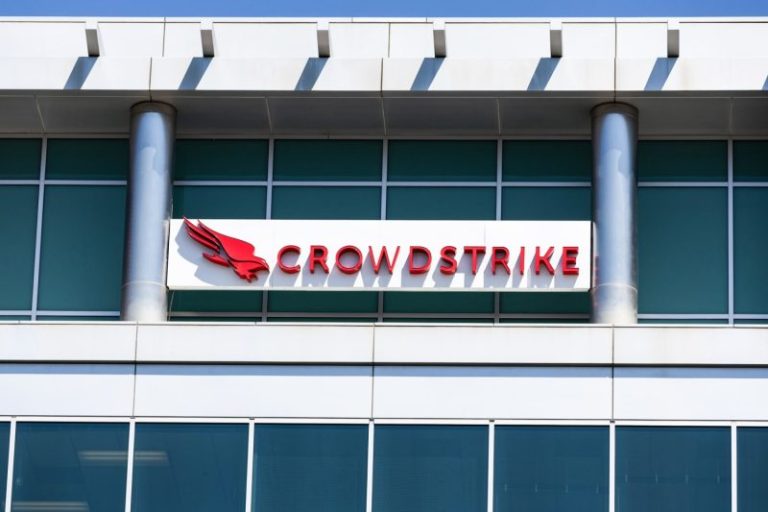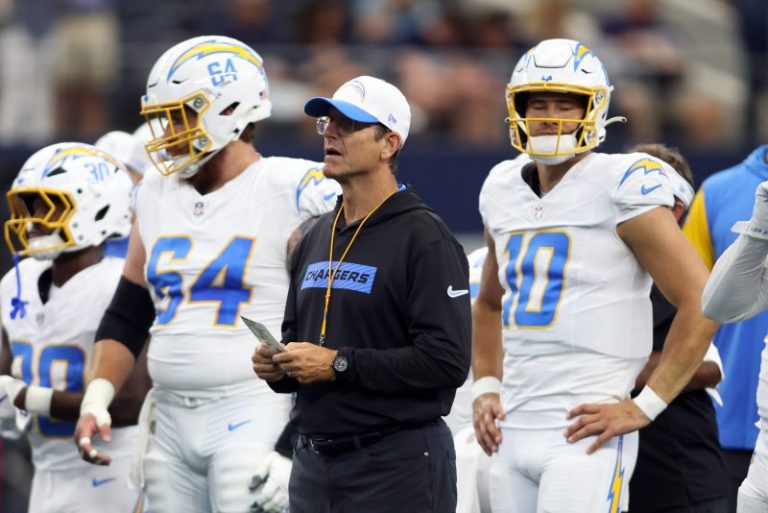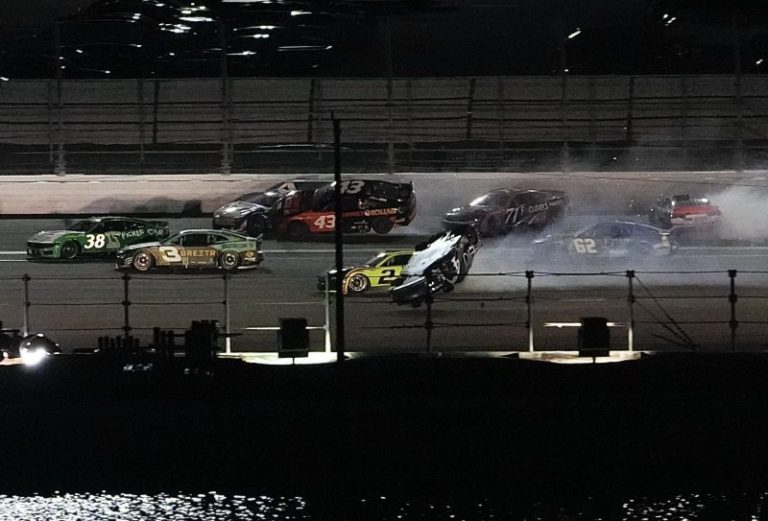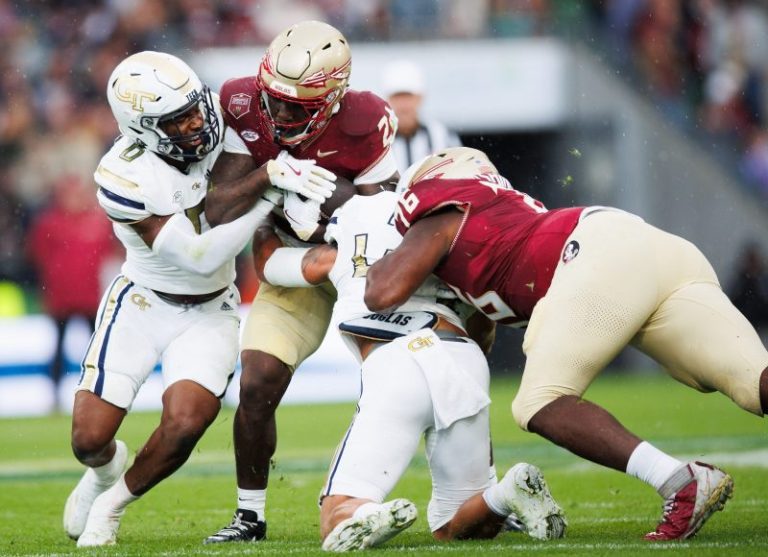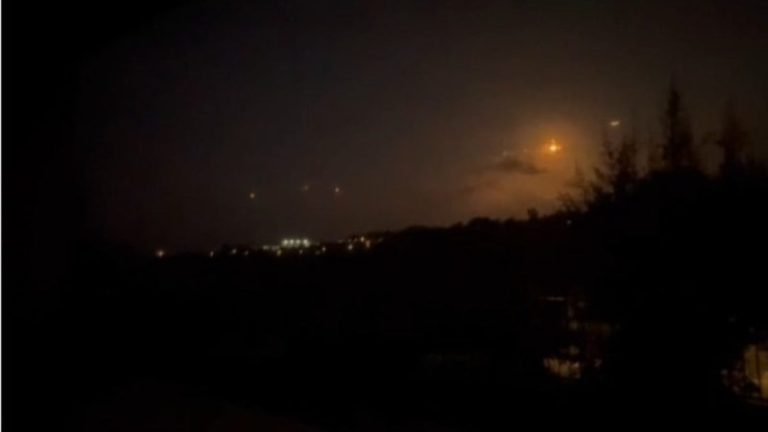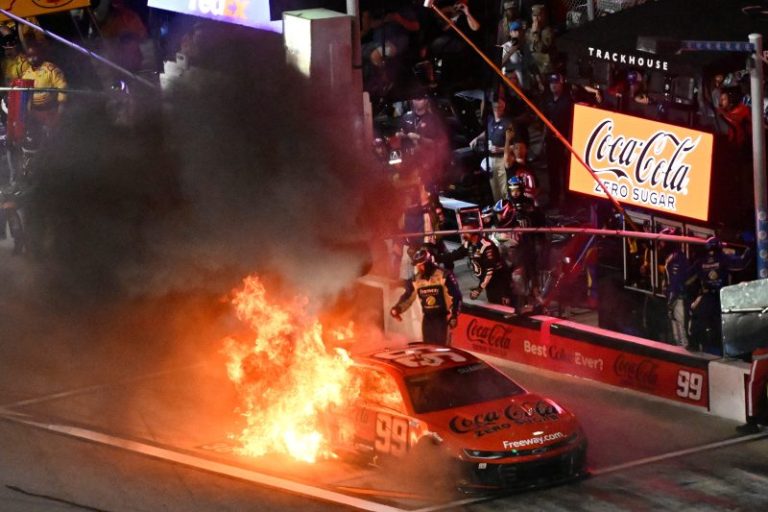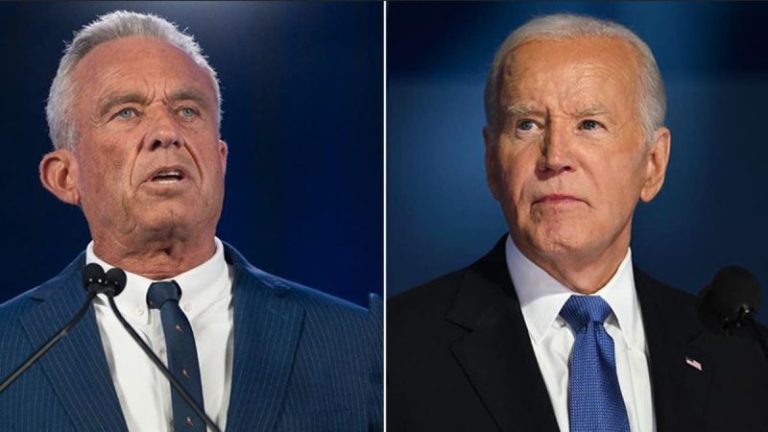The Saturday games at the Little League World Series saw plenty of drama as the United States and International brackets crowned champions.
A strong defensive performance saw Chinese Taipei win the International bracket, holding a powerful Venezuela team to just three hits in a 4-1 win. That sets Chinese Taipei, who hold the LLWS record for most overall championship wins with 17, up for yet another tournament victory.
Meanwhile, the United States Championship was a wild one. Florida staged two different comebacks, winning 10-7 after trailing Texas by four runs early, and by two heading into the sixth and final inning.
Here’s everything from today’s Little League World Series action, as it played out.
Follow every MLB game: Latest MLB scores, stats, schedules and standings.
When is the LLWS Championship Game?
The 2024 Little League World Series Championship Game between Florida and Chinese Taipei is set for the back end of a double-header at Lamade Stadium on Sunday, Aug. 25.
All times Eastern.
Third-place Game: Venezuela vs. Texas, 10 a.m. | ESPN2
Championship Game: Chinese Taipei vs. Florida, 3 p.m. | ABC
Final: Florida 10, Texas 7
After taking one out, Texas gets one runner aboard, but Florida gets the job done. Luis Calo gets a double play on the next at-bat, and Florida completes a stunning comeback from four runs down.
Florida advances to take on Chinese Taipei in Sunday’s final, while Texas heads to a third-place game against Venezuela.
Alert baserunning gets Florida another run
Teraj Alexander is walked, and what follows is a wild sequence. Texas doesn’t stay alert to Liam Morrisey stealing third, and the attempt to throw him out ends up with the ball in the dirt.
Morrisey runs home to make it 10-7, while Alexander tries to extend the situation. This time, Florida finally overreaches, with Alexander eventually tagged out at third.
That’s the end of the inning, and now Texas suddenly needs three runs to stay in the game.
Luis Calo gets two RBIs as Florida takes a 9-7 lead
Luis Calo makes great contact to send the ball into right field, and Florida brings two runners in. Calo is in at second, and it’s suddenly 9-7 Florida as this game keeps having twists and turns.
Florida ties it back up, 7-7
Liam Morrisey sends a sacrifice fly into the outfield, and Florida ties the scores at seven apiece.
Morrisey is then immediately brought in to pinch-run, but we have an appeal over whether Florida tagged up correctly after getting the run.
Texas’ coaching staff still seems confused over the call, and now we have an illegal pitch as Texas has Kaleb Christ step off the mound.
Amid all of this, Luis Calo is at bat with a 2-2 count, two outs, and runners in scoring position.
Florida makes it 7-6 on Bibaud’s hit
DJ Mieses clips one towards first, with Cooper Hastings making a great play with a diving catch. Texas tries to turn a double play, but misses out by inches.
However, the next at-bat sees Jacob Bibaud hit a hard ground ball up the middle, and a timely bounce gets it into the outfield. Florida gets a runner in to make it 7-6, and now have the bases loaded with only one out.
Florida with runners in scoring position in the sixth
Kaleb Christ steps in as Texas’ latest pitcher, but JJ Feliciano draws a walk to start the inning. Garrett Rohozen then smacks a hit to the wall, and suddenly Florida has the tying run in scoring position.
Mix-up at home gets Texas another run
Cooper Hastings swings and misses, but with the ball getting away from Landon Bono, the Texas batter can still run to first.
Texas brings a runner in after Hastings and Bono both hesitate before realizing it’s a live ball. It’s 7-5 on the scoreboard right now, but Florida has challenged the play.
After review, the umpires stick with the initial call. The inning ends on a grounder, but it’s 7-5 Texas heading into the sixth. If Florida can’t get two runs on the board, Texas is heading to the championship game.
Texas leads 6-5
Calo throws a wild pitch, and Dylan Burke sprints home to give Texas a 6-5 lead.
Florida is still in a tough spot with runners in scoring position, but they just need one out to stay within one run heading into what could be the final inning.
Texas ties it back up 5-5
After the change, Luis Calo’s first pitch gets a simple pop-up at home plate, but he then walks Hurst to load the bases.
Gray Collins is up next, and he zips one right back up the middle, bringing in a game-tying RBI. It’s 5-5 in what’s turning out to be a thriller at Lamade Stadium.
Don’t count Texas out
Gabe Steubing starts the bottom of the fifth off with a hit up the third-base line, and then gets the crowd going once he gets to first. Landon Bono responded with a strikeout for Florida, but Dylan Burke belts one an inch beyond JJ Feliciano’s grasp to get a second runner aboard.
Florida is switching things up, with Luis Calo taking over pitching duties. Bono is now back behind home plate as the catcher, where he started the game.
Florida makes it 5-4 as Alexander steals home
Kole Newson is now the pitcher after Doc Mogford is helped off the field by the trainer.
It’s a really difficult moment for Texas, who have to get two outs with runners on the corners to keep this game tied. Newson gets a strikeout in four pitches, but Teraj Alexander sprints in from third to steal home. Replay shows that Newson turned his back to home plate, and Alexander pounced on the opportunity to run home.
It’s now 5-4 Florida, what a wild comeback here in the fifth inning.
Florida makes it 4-4, Mogford possibly injured
Teraj Alexander takes three balls before firing a double into the outfield. Bibaud scores, Calo just barely gets in safe at third after a slip, and Alexander was dancing on second base.
However, the game has stopped for a scary moment. Christopher Chikodroff’s hit goes right back at Mogford, hitting him in the knee. Florida gets a runner in to make it 4-4, but the bigger concern is Mogford’s health. The crowd is silent as the trainers and both coaches attend to the Texas pitcher.
Texas changes pitchers
Julian Hurst walks Luis Calo, and Texas coach Justin Newson makes the call for a pitching change. Collins gives his starting pitcher a hug before shuffling things up, with Doc Mogford coming from center field to take over on the mound.
It’s 4-2 with runners on the corners, and Texas is in a jam. With one out, Mogford has a tricky task ahead of him to keep Florida from turning this into a serious comeback.
Florida brings in a runner to make it 4-2
Liam Morrisey can’t get aboard himself, but he gets a sacrifice RBI to make it 4-2. Mieses scores, and Bibaud is on third base with one out. Hurst has 15 pitches left before he hits the 85-pitch maximum, and has given a thumbs-up to the dugout.
Florida looking dangerous in the fifth
DJ Mieses is just inches from a home run with a long hit to center field. The Florida slugger is in with a stand-up double, and Julian Hurst appears to be telling the Texas coaches that he’s having shoulder trouble.
The next pitch sees Jacob Bibaud get a single, moving Mieses over to third. Hurst is staying in, but this could be a critical moment in this game.
Pitching change for Florida to start the fourth
As expected, JJ Feliciano is no longer pitching, with Landon Bono taking over on the mound. Feliciano is now Florida’s shortstop.
Bono’s first inning of work was pretty impressive overall: three outs on eight pitches, with two long fly balls caught by outfielders after a groundout.
Florida on the board, now trails 4-1
Christopher Chikodroff got aboard to end Hurst’s run of total dominance, and Florida made it count. JJ Feliciano’s single to center field brought Chikodroff in to make it 4-1, and Florida’s batters suddenly seem to have some confidence.
Still, Hurst showed he can throw some heat, striking out Garrett Rohozen for a second out. It looked like Hurst would add to his strikeout total against Landon Bono, but the ball briefly escaped catcher Caden Guffey. However, Guffey recovered really well, spinning to throw Bono out at first to end the inning.
Texas doubles its lead
With two runners aboard, Doc Mogford smacks the ball to left field, where Jacob Bibaud’s dive comes up inches short. What could have been an inning-ending out instead became a two-RBI double, allowing Texas to take a 4-0 lead.
JJ Feliciano gets his seventh strikeout to end the third inning, but having thrown 84 pitches, that might be it for him on the mound. The Little League World Series has an 85-pitch limit before a pitching change is enforced.
Hurst sits all three Florida batters in the third
If Florida’s going to mount a comeback, they’ll have to solve Texas pitcher Julian Hirst, who looks unhittable at the moment. The third inning was three up, three down, with Hurst piling up the strikeouts.
Texas leads 2-0
Texas got the bases loaded in the bottom of the second, and made it count. With Kaleb Christ looking to bunt, pitcher JJ Feliciano’s pitch got away from him, going past catcher Landon Bono. That brought a run in, giving Texas the game’s first run.
Christ stayed at the plate, and batted another run in with a grounder to first. While Florida eventually finished the inning off with a Feleciano strikeout, they’re in a two-run hole.
Julian Hurst needs a handful of pitches
Texas’ Julian Hurst was pretty darn efficient in the second, getting a couple of immediate groundballs to kickstart things, followed by a 1-2-3 punchout. And with that, Texas is back up after just five pitches.
Florida escapes shaky start
James Feliciano delivered a couple of passed balls and saw Texas get runners on second and third. The Florida pitcher settled into a groove and finished the first inning with a couple of strikeouts. No score after one.
Texas flashes defense to start game
Julian Hurst fielded a comebacker to get the double play. A quick pop-out by Garrett Rohozen later and Texas is up and it’s Florida’s turn to take the field. No score after the first half-inning.
LLWS U.S. Championship Game: Texas vs. Florida
Next up is the U.S. Championship: Texas vs. Florida, which will broadcast on ABC at 3:30 p.m.
Chinese Taipei head to Little League World Series Championship
Behind a remarkable start from Lai Cheng Xi, Chinese Taipei is heading to the Little League World Series Championship and will play the winner of this afternoon’s game between Texas and Florida.
With 12 strikeouts, Lai Cheng Xi never let Venezuela get a rhythm offensively. Now the Asia Pacific winner will get a shot at the ultimate prize on Sunday.
Score: Chinese Taipei 4, Venezuela 1
Lai Cheng Xi comes out of the game
Chinese Taipei’s hurler leaves the game with 12 strikeouts and the lead. A walk and double now have Venezuela on second and third with Chiu Wei-Che pitching.
Chinese Taipei three outs away
Venezuela’s Luis Yepez covered serious ground to run down a foul ball for the inning’s best highlight. Now it’s time for Venezuela to either mount a serious comeback or it will be Chinese Taipei headed to the LLWS Championship Game.
Chinese Taipei cruising
Venezuela did enjoy a single from Jhonson Freitez. But that was it as Lai Cheng Xi got another strikeout and gave his team the defensive cushion it needs heading into the final inning of play. Chinese Taipei 4, Venzuela 0
Venezuela error widens Chinese Taipei’s lead
Venezuela players collide in center on a popup from Chiu Wei-Che. With two outs, centerfielder Samuel Carrasquel failed to come up with the play after colliding with Venezuela’s shortstop. Chen Bo-Wei scored on the play.
Venezuela now has just six outs to eat into this 4-0 deficit.
Venezuela comes up empty as Cheng-Xi deals
In the third, it was more of the same. Lai Cheng-Xi adds to his totals on the day, notching his tenth strikeout on the day. He now has a one-hitter through four complete innings. Chinese Taipei will be up to start the fifth with the lead, 3-0
Chinese Taipei extends lead in the third inning
Chinese Taipei added another run to the scoreboard after a walk brought in the runner on third and loaded the bases. Chinese Taipei wasn’t done and scored on an error by the catcher. As a result, Chinese Taipei leads 3-0 heading into the fourth inning.
Defense is the name of the game
Both teams demonstrate strong defense and prevent any runs in the second inning.
Venezuela fails to respond
Chinese Taipei’s defense holds Venezuela scoreless in the first inning.
Chinese Taipei strikes first
Chinese Taipei comes out in full force and scores off a wild pitch to get on the scoreboard first in the top of the first inning.
2024 Little League World Series: Time, TV, streaming and how to watch
All 39 games of the Little League World Series will be broadcast on one of ESPN, ESPN2 or ABC, with streaming options including ESPN+, the ESPN app and Fubo, which offers a free trial.
Coverage today begins at 12:30 p.m. ET on ABC.
What teams remain at the LLWS?
Chinese Taipei
Venezuela
Texas
Florida
Little League World Series schedule and bracket:
(All times in ET)
Wednesday, Aug. 14:
Game 1: Mexico 2, Caribbean 0
Game 2: West 3, New England 1
Game 3: Asia-Pacific 8, Canada 0
Game 4: Southeast 2, Midwest 1
Thursday, Aug. 15:
Game 5: Japan 11, Puerto Rico 0
Game 6: Mountain 9, Metro 1
Game 7: Cuba 4, Europe-Africa 1
Game 8: Southwest 9, Mid-Atlantic 0
Friday, Aug. 16:
Game 9: Latin America 10, Mexico 0
Game 10: West 5, Great Lakes 0
Game 11: Asia-Pacific 11, Australia 0
Game 12: southeast 6, Northwest 1
Saturday, Aug. 17:
Game 13: Canada 12, Puerto 5
Game 14: Metro 6, Midwest 3
Game 15: Caribbean 8, Europe-Africa 3
Game 16: Mid-Atlantic 5, New England 0
Sunday, Aug. 18:
Game 17: Metro 4, Great Lakes 0
Game 18: Mexico 8, Canada 0
Game 19: Mid-Atlantic 12, Northwest 2
Monday, Aug. 19:
Game 20: Caribbean 11, Australia 0
Game 21: Japan 2, Latin America 1
Game 22: Mountain 3, West 2
Game 23: Asia-Pacific 10, Cuba 2
Game 24: Southwest 4, Southeast 1
Tuesday, Aug. 20:
Game 25: Latin America 2, Caribbean 1
Game 26: West 3, Mid-Atlantic 1
Game 27: Mexico 6, Cuba 4
Game 28: Southeast 6, Metro 1
Wednesday, Aug. 21:
Game 29: Chinese Taipei 3, Japan 1
Game 30: Texas 5, Nevada 2
Game 31: Mexico vs. Venezuela on ESPN
Game 32: Florida vs. Hawai’i on ESPN
Thursday, Aug. 22:
Game 33: Venezuela vs. Japan, 3 p.m. on ESPN
T-Mobile Little League Home Run Derby
Game 34: Florida vs. Nevada, 7 p.m. on ESPN
Friday, Aug. 23:
7 p.m. T-Mobile Little League Home Run Derby airing on ESPN
Saturday, Aug. 24:
International Championship: Chinese Taipei vs Venezuela on ABC at 12:30 p.m.
U.S. Championship: Texas vs. Florida on ABC at 3:30 p.m.
Sunday, Aug. 25:
Consolation Game on ESPN2 at 10 a.m.
World Series Championship on ABC at 3 p.m.
When is the LLWS championship game?
The Little League World Series (LLWS) championship game is scheduled for Sunday, August 25th at 3 p.m. ET. The third-place consolation game is set to take place the same day at 10 a.m. ET.
The international and U.S. championship games, serving as the semifinals to Sunday’s championship game, will take place on Saturday, August 24 at 12:30 and 3:30 p.m. ET.
Kids need to be Kids: Thoughts on the Little League World Series
USA Today’s Stephen Borelli writes on the Little League World Series and the young players that make up this wonderful tournament: ‘We expect them to come through and we cheer like heck when they do.’
Amid the celebration come tears and high levels of stress. Borelli reminds us that the players entertaining so many this weekend are children and offers some insight on not just remembering that fact but also making the tournament’s presentation more in line with the athletes’ ages.
‘We love the Little League World Series, but there are subtle ways to make it even better. Here’s how we can reduce the pressure on kids who play in it and open up opportunities for more of them to have a shot at it,’ Borelli writes.
How does the Little League World Series work?
The Little League World Series is divided into two brackets: the United States bracket and the international bracket. Each bracket will conduct its own individual tournament, and the winner from each bracket will face off in the championship.
The U.S. and international brackets are double-elimination brackets. This means that a team can still advance in a separate elimination bracket even after losing its first game. The winner of the elimination bracket then plays against the winner of the winners’ bracket in the U.S. or international final for the opportunity to compete in the LLWS championship.
In other words, a team must be defeated twice to be eliminated from the tournament.
The 2024 U.S. Regional Champions
Great Lakes – Hinsdale Little League – Hinsdale, Illinois
Metro – South Shore Little League – Staten Island, New York
Mid-Atlantic – Council Rock Newtown Little League – Newtown, Pennsylvania
Midwest – Sioux Falls Little League – Sioux Falls, South Dakota
Mountain – Paseo Verde Little League – Henderson, Nevada
New England – Salem Little League – Salem, New Hampshire
Northwest – South Hill Little League – Puyallup, Washington
Southeast – Lake Mary Little League – Lake Mary, Florida
Southwest – Boerne Little League – Boerne, Texas
West – Central East Maui Little League – Wailuku, Hawaii
The 2024 International Regional Champions
Asia-Pacific – Kuei-Shan Little League – Taoyuan City, Chinese Taipei
Australia – Hills Little League – Sydney, New South Wales
Canada – Whalley Little League – Surrey, British Columbia
Caribbean – Aruba Center Little League – Santa Cruz, Aruba
Cuba – Santa Clara Little League – Villa Clara, Cuba
Europe-Africa – South Czech Republic Little League – Brno, Czech Republic
Japan – Johoku Little League – Tokyo, Japan
Latin America – Cardenales Little League – Barquisimeto, Venezuela
Mexico – Matamoros Little League – Tamaulipas, Mexico
Puerto Rico – Radames Lopez Little League – Guayama, Puerto Rico
Past Little League World Series results
In recent years, teams from the United States have been very successful in the Little League World Series, winning the last five championships since 2017. The most recent international team to win the tournament was Japan, who defeated Lufkin, Texas 12-2 in the 2017 final, which lasted just five innings.
List of past winners:
Results date back to 2010 LLWS.
2023: El Segundo, Calif.
2022: Honolulu
2021: Taylor, Mich.
2020: Canceled due to COVID
2019: River Ridge, La.
2018: Honolulu
2017: Tokyo
2016: Maine-Endwell, N.Y.
2015: Tokyo
2014: Seoul, South Korea
2013: Tokyo
2012: Tokyo
2011: Huntington Beach, Calif.
2010: Tokyo
LLWS bracket and schedule
Here is the full 2024 LLWS bracket, courtesy of the Little League World Series:
We occasionally recommend interesting products and services. If you make a purchase by clicking one of the links, we may earn an affiliate fee. USA TODAY Network newsrooms operate independently, and this doesn’t influence our coverage.
This post appeared first on USA TODAY

